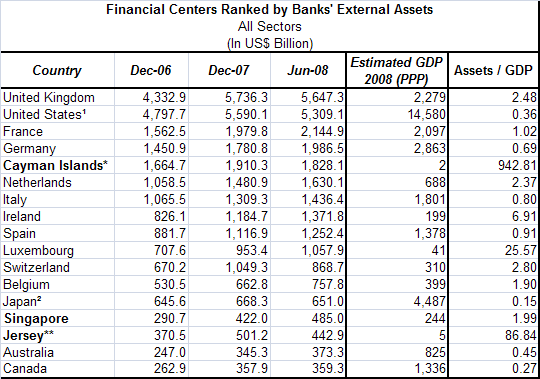Bank for International Settlements
This table ranks the largest financial and offshore centers by banks' external assets. Majoroffshore centers are in bold.

(Created by Tobias Schiedermair, May 2006; updated by Leila Farahani, February 2009)
Sources:
Table notes:
(1)including international banking facilities (IBFs). IBFs allow depository institutions in the United States to offer services to foreign residents and institutions free of some Federal Reserve requirements and some state and local income taxes.
(2)including the Japanese offshore market.
*GDP Estimates for 2004
**GDP Estimates for 2005
of all banking offices residing in each reporting country.
Additional information:
Detailed information on breaks in series in the locational banking statistics are available on the BIS website under http://www.bis.org/publ/qtrpdf/r_qa0812.pdf#page=36.
More Tables and Charts on Nations & States
More Information on Tax Havens
More Information on Transnational Corporations
More Tables and Charts on Transnational Corporations

